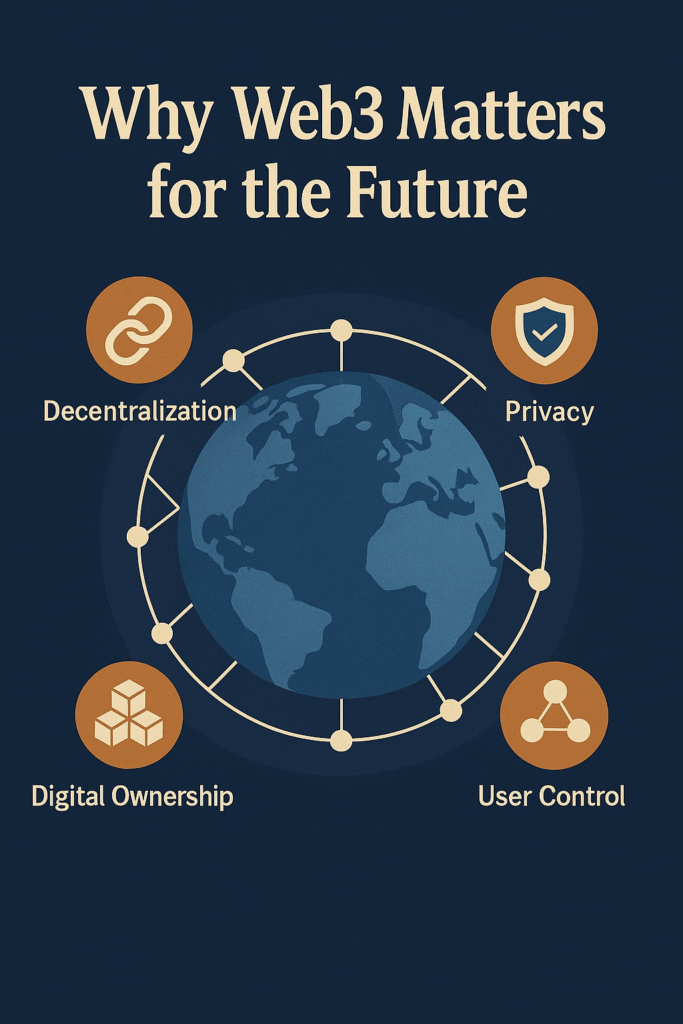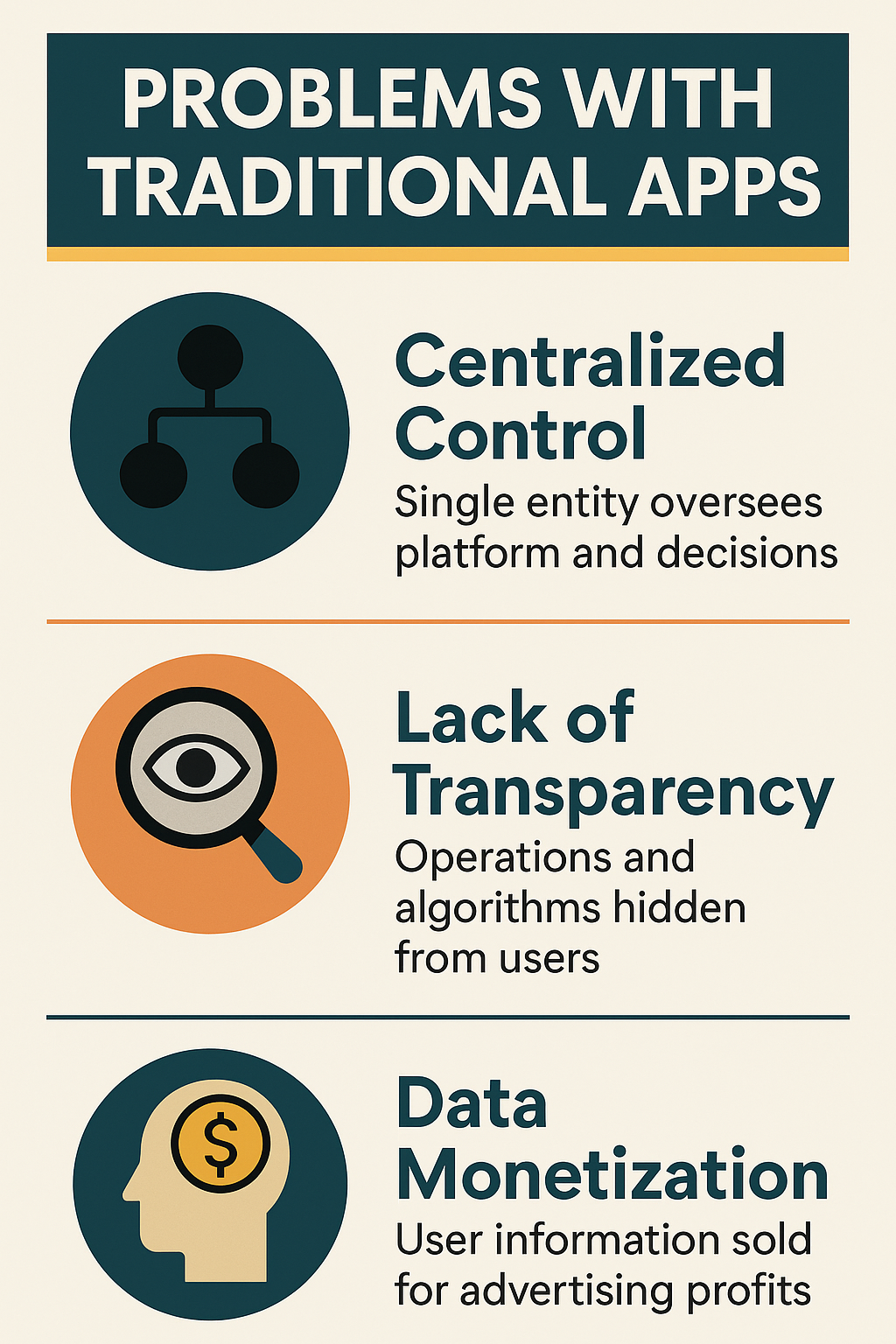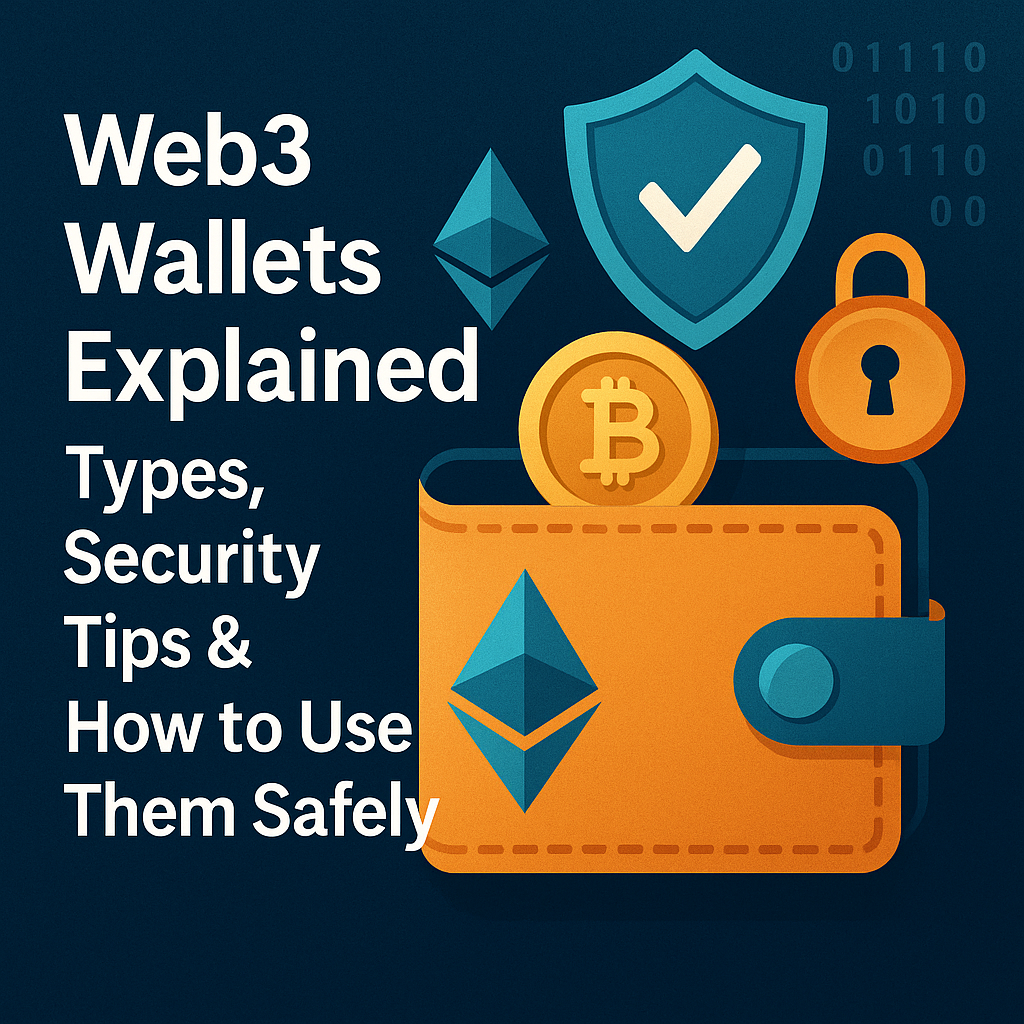
“Web3 shifts power from tech giants to the people.”
You’ve probably heard the term Web3 in crypto circles or on Twitter, often tied to buzzwords like decentralization, blockchain, and the metaverse.
But what is Web3, really? Is it the next version of the internet? A new business model? Or just another crypto trend?
In this guide, we’ll break down Web3 in the simplest terms possible — how it evolved, what it means for you, and why it’s being called “the internet of ownership.”
📌 Table of Contents
- What Is Web3?
- Web1 → Web2 → Web3: Internet Evolution Explained
- Key Features of Web3
- How Blockchain Powers Web3
- Real-World Web3 Applications
- Web2 vs Web3: Comparison Table
- Case Study: Lens Protocol — Web3 Social Media
- Benefits of Web3 for Users
- Risks, Challenges & Limitations
- Final Thoughts + Trusted Resources
1. 🧠 What Is Web3?
Web3 refers to a decentralized version of the internet built on blockchain technology. It allows users to own their data, control their digital identity, and participate in the governance and economy of the apps they use.
💬 “If Web1 was read-only, Web2 was read-write. Web3 is read-write-own.”
In short: Web3 = User empowerment + decentralization + crypto + community.
2. 📜 Internet Evolution: Web1 → Web2 → Web3
| Era | Name | Characteristics |
|---|---|---|
| Web1 | Read-only Web | Static websites, no user interaction |
| Web2 | Read-Write Web | Social media, centralized platforms |
| Web3 | Read-Write-Own | Decentralized apps, ownership, tokens |
Web1 (1990s–2005)
- You read blogs, but couldn’t comment
- Limited interactivity
Web2 (2005–present)
- You can post, comment, like, share
- But companies like Facebook and Google own the data
Web3 (now emerging)
- You control your data and even earn rewards for participation
- Apps run on decentralized networks, not on private servers
3. 🔑 Key Features of Web3

| Feature | Why It Matters |
|---|---|
| 🔓 Decentralized | No single point of control (goodbye tech monopolies) |
| 🆔 Self-sovereign identity | You own your online identity |
| 🎁 Token economy | Get rewarded for participating |
| 📜 Transparent code | Open-source, trustless systems |
| 🗳️ Community governed | Decisions made via DAOs, not CEOs |
4. ⚙️ How Blockchain Powers Web3
Blockchain provides the infrastructure for Web3 apps, often called dApps (decentralized applications).
Here’s how it works:
- Smart contracts replace backend code
- Cryptocurrencies act as fuel and incentives
- Wallets like MetaMask let users log in without passwords
- IPFS & Arweave help store data in a distributed way
This stack allows people to use apps without giving up control or privacy.
5. 🛠️ Real-World Web3 Applications
| App/Platform | Use Case | Token/Tech |
|---|---|---|
| Uniswap | Decentralized trading | UNI (Ethereum) |
| Lens Protocol | Social media (Web3) | Polygon-based |
| Brave Browser | Rewards for attention | BAT token |
| Audius | Decentralized music | AUDIO token |
| Decentraland | Virtual world/metaverse | MANA token |
💬 “Web3 gives creators and users a stake in the platforms they power.”
6. 🏛️ Web2 vs Web3: Side-by-Side Comparison
| Feature | Web2 | Web3 |
|---|---|---|
| Data Ownership | Companies | Users |
| Monetization | Ads, user data | Tokens, ownership |
| Login System | Emails, passwords | Crypto wallets |
| App Governance | Company executives | DAOs & community voting |
| Censorship | Centralized control | Resistant via decentralization |
7. 📚 Case Study: Lens Protocol – Web3 Social Media
Lens Protocol is a Web3 social graph that lets users:
- Own their content and followers
- Move between apps without losing followers
- Monetize content directly with crypto
Unlike Facebook or Twitter, where your audience is locked into the platform, Lens lets you truly own your digital social identity.
Built on Polygon, Lens is open-source, composable, and decentralized.
8. ✅ Benefits of Web3 for Users
| Benefit | Description |
|---|---|
| 💼 True Ownership | Own digital assets, content, identity |
| 💵 Earn While Using | Token incentives for activity |
| 🌎 Borderless Access | Anyone with internet can participate |
| 🧠 Innovation Boost | Open infrastructure for developers |
| 🛡️ Privacy Protection | Less data collection by centralized firms |
9. ⚠️ Risks and Limitations
| Risk/Challenge | Impact |
|---|---|
| 🧪 Early-Stage Tech | Web3 is still developing (bugs, UX issues) |
| 📈 High Volatility | Token prices can fluctuate wildly |
| ⚖️ Regulation Unclear | Governments still forming policies |
| 🧑💻 Complexity | Steep learning curve for beginners |
| ⚠️ Scams & Rug Pulls | Many shady projects without regulation |
💡 Always research projects, use trusted wallets, and avoid FOMO (fear of missing out).
🔚 Final Thoughts
Web3 represents a bold new chapter in internet history — one where users own, govern, and benefit from the apps and platforms they use.
💬 “Web3 is not a trend. It’s the next logical evolution of digital life.”
While the technology is still young, the vision is clear: a more fair, open, and user-empowered digital world.
🔗 Useful Resources
- Ethereum.org – Web3 Explained
- Lens.xyz – Web3 Social Graph
- Brave Browser – Web3-ready browser
- Web3 Foundation

